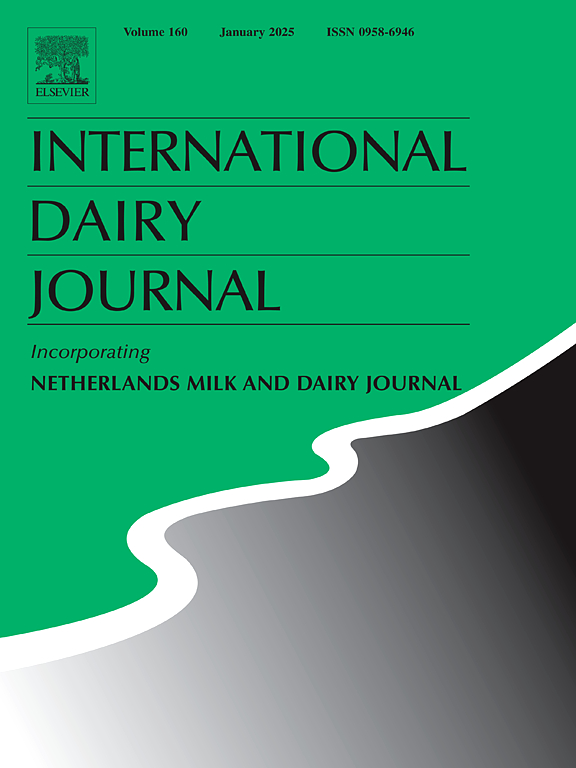不同发酵培养基产克非尔多糖对黄曲霉毒素M1结合能力的评价
IF 3.4
3区 农林科学
Q2 FOOD SCIENCE & TECHNOLOGY
引用次数: 0
摘要
kefir衍生的胞外多糖(EPS)显示出减少乳制品中黄曲霉毒素M1 (AFM1)的希望。本研究评估了乳(FS- m)和二次乳清(FS- sw)培养的开菲尔谷物冻干EPS (FS)对AFM1的保留能力。两者的碳水化合物含量相似,但FS-M的蛋白质含量高出3倍,而FS-SW的灰分含量高出45%。在pH 6.8, AFM1 1.0 μg/L的缓冲液中,使用0.5-3.0%的FS,在3-24 h内测试AFM1的结合情况。24 h后,FS- m(1%)保留了52.2%的AFM1,优于FS- sw(34.2%),这可能是由于FS- sw的蛋白质含量较高。高效液相色谱显示了独特的蛋白质相关峰,表明蛋白质参与了结合。开菲尔EPS,特别是高分子量多糖,可作为乳制品中afm1的有效过滤添加剂。需要进一步的提取研究和实际应用。本文章由计算机程序翻译,如有差异,请以英文原文为准。
Evaluation of aflatoxin M1 binding capacity of kefir exopolysaccharides produced with different fermentation media
Kefir-derived exopolysaccharides (EPS) show promise for reducing aflatoxin M1 (AFM1) in dairy. This study assessed the AFM1 retention capacity of freeze-dried EPS (FS) from kefir grains cultured in milk (FS-M) and secondary whey (FS-SW). Both had similar carbohydrate levels, but FS-M contained three times more protein, while FS-SW had 45% higher ash.
AFM1 binding was tested in buffer (pH 6.8, 1.0 μg/L AFM1) using 0.5–3.0% FS over 3–24 h. FS-M (1%) retained 52.2% of AFM1 after 24 h, outperforming FS-SW (34.2%), likely due to its higher protein content. HPLC revealed unique protein-associated peaks, suggesting protein involvement in binding. Kefir EPS, especially high-molecular-weight polysaccharides like kefiran, could be effective AFM1-filtering additives in dairy. Further research on extraction and practical applications is needed.
求助全文
通过发布文献求助,成功后即可免费获取论文全文。
去求助
来源期刊

International Dairy Journal
工程技术-食品科技
CiteScore
6.50
自引率
9.70%
发文量
200
审稿时长
49 days
期刊介绍:
The International Dairy Journal publishes significant advancements in dairy science and technology in the form of research articles and critical reviews that are of relevance to the broader international dairy community. Within this scope, research on the science and technology of milk and dairy products and the nutritional and health aspects of dairy foods are included; the journal pays particular attention to applied research and its interface with the dairy industry.
The journal''s coverage includes the following, where directly applicable to dairy science and technology:
• Chemistry and physico-chemical properties of milk constituents
• Microbiology, food safety, enzymology, biotechnology
• Processing and engineering
• Emulsion science, food structure, and texture
• Raw material quality and effect on relevant products
• Flavour and off-flavour development
• Technological functionality and applications of dairy ingredients
• Sensory and consumer sciences
• Nutrition and substantiation of human health implications of milk components or dairy products
International Dairy Journal does not publish papers related to milk production, animal health and other aspects of on-farm milk production unless there is a clear relationship to dairy technology, human health or final product quality.
 求助内容:
求助内容: 应助结果提醒方式:
应助结果提醒方式:


